In recent years, cities across the United States have seen surging growth in cycling as a practical means of transportation. With concerns over sustainability, traffic congestion, infrastructure costs, public health, and livability taking center stage, urban planners are focused on making cycling a safe, convenient, and viable alternative to driving. However, truly bikeable cities require more than just bike lanes on roads. They need proper parking facilities and infrastructure to support cyclists' needs. That's where thoughtfully placed and designed commercial bike racks make all the difference.
Unlike residential bike racks, commercial-grade bike racks are made to handle constant public use and outdoor exposure. Investing in quality racks signals that cyclists are welcomed and valued in public spaces. It encourages residents to use pedal power for local trips while supporting larger municipal sustainability goals. Just as intelligent parking infrastructure is crucial for motorists, every truly bike-friendly community needs ample, conveniently located bike racks to accommodate demand.
Understanding the Concept of Sustainable Mobility
Sustainable mobility is a concept gaining traction in modern urban planning as cities aim to transform their transportation networks to be environmentally responsible, socially equitable, and economically vibrant. At its core, sustainable mobility seeks to reduce reliance on private motor vehicles in favor of cleaner public transit, pedestrian networks, and human-powered options like bicycling. By shifting mobility modes, cities can cut emissions, reduce household transportation costs, ease traffic congestion, and reclaim street space for people.
The Importance of Sustainable Mobility in Modern Cities
Achieving sustainable mobility goals is crucial as metropolitan areas grow in size and economic significance. Cities account for an estimated 50-80% of U.S. emissions driving climate change, and much of those emissions come directly from cars and trucks. Without curbing car and truck traffic, urban centers face extreme challenges in meeting ambitious climate action targets.
Beyond emissions and the environment, auto-centric transportation negatively impacts public health, livability, economic equity, and social cohesion in cities. Sustainable mobility provides a framework addressing these issues holistically while improving life for residents of all backgrounds.
The Challenges to Achieving Sustainable Mobility
Transitioning away from the personal vehicles we heavily rely on presents significant political, economic, and practical barriers for cities. Massive infrastructure investments, policy changes, and public awareness campaigns are required to make cycling, public transit, and walking safe, attractive options.
One of the most immediate challenges is space constraints. Retrofitting car-centric streets takes up precious urban real estate needed for wider sidewalks, bus lanes, bike highways, green space, commercial activity, and housing. Difficult trade-off decisions underpin every transportation project.
How Commercial Bike Racks Promote Sustainable Mobility
Within the sustainable mobility toolkit, purpose-built bike parking infrastructure plays an important supporting role while requiring minimal space allocation. Thoughtfully sited outdoor and indoor bike racks encourage cycling over short trips otherwise taken by car. Without secure parking facilities, many would-be cyclists feel deterred by the risk of threat. Sturdy commercial-grade racks located at top destinations empower cyclists aiming to take their bikes out more often.
Cycling instead of driving personal vehicles supports cities' climate action and sustainability plans. Shifting short trips from cars to bikes can make a real impact on reducing a metro area's carbon footprint. As more cities adopt ambitious emissions reduction goals, infrastructure that gets residents pedaling is crucial for reaching targets.
Every new cyclist opting to lock their bike securely on a rack means one less car on already congested roads. Quality bicycle parking spaces available across the urban landscape facilitate this modal shift while supporting economic goals. Cyclists frequent local businesses more often and spend comparably to drivers. Bike parking infrastructure helps districts reimagine streets as people-centered places to eat, shop, and linger rather than just vehicle throughput.
Commercial Bike Racks Encourage Cycling
Unlike residential-use bike racks, public bike racks are designed to handle frequent locking/unlocking and long-term outdoor exposure. Durable designs with tamper-proof mountings and weather-resistant finishes provide confident security for cyclists. Racks that fully secure bike frames prevent theft better than wheel locks. This deters bike loss, the leading factor discouraging potential riders.
Visible racks also advertise a location’s bike accessibility to visitors. Thoughtful bike parking placement near entryways signals to cyclists that their transportation choice is welcomed. Abundant bike parking distributed across a city landscape encourages an increase in cycling. The collective impact of plentiful quality bike racks makes achieving sustainable mobility goals possible.
Promoting Active Lifestyles
Making cycling an easily accessible and secure transportation choice has become a priority for cities looking to promote active living and reduce environmental impact. With inactivity, sedentary lifestyles, and resulting health issues on the rise nationwide, urban design that encourages outdoor activity enables healthy lifestyle habits. Biking to work, school, or leisure destinations builds a convenient physical activity into residents' daily routines.
Different Types of Commercial Bike Racks and Their Benefits
Commercial-grade bike racks come in many designs to suit security needs, space constraints, capacity demand, and aesthetic taste. Classic “inverted U” racks keep bikes upright while allowing riders to lock both wheels and frames. More artistic wave and ring racks add stylistic flair while efficiently using space. Custom options like branded racks tailor functionality to unique spaces.
Grid bike racks maximize capacity, which is important for high-traffic destinations and dense neighborhoods. Low-profile wheel lock racks have minimal visual impact. Secured enclosures provide comprehensive weather protection with the trade-off of limited volume compared to streetscape solutions.
Before selecting racks, property managers should consider visibility, clearance, lighting, proximity to entries, shelter, footing, typical bike volumes, aesthetics, and theft rates. Expert guidance ensures ideal rack selection.
Deterring Theft to Encourage Ridership
While cycling enthusiasm may be growing exponentially in many cities, ridership growth depends heavily on perceived safety and parking security. Nothing discourages potential cyclists more than hearing tales of stolen bikes. New riders are especially sensitive to theft deterrence. Quality racks that fully secure bike frames promote public confidence in cycling infrastructure. With bike theft rampant in many urban areas, securing your bicycle on a bike rack designed for the public is far safer than using street furniture.
While cycling itself may provide a modest workout, constantly lugging a 20 lb. bike up multiple flights of stairs to one's apartment every day can quickly dull someone's enthusiasm for bike commuting. Without secure street-level parking options, many would-be bike commuters end up defaulting to four wheels.
Commercial bike racks allow cyclists to safely stow their rides worry-free. Thoughtfully placed racks at popular destinations give cyclists the flexibility to lock up their bikes and feel at ease while socializing, working, studying, or dining. Safe bike storage facilities encourage ridership across age groups and fitness levels, and increased cyclist volumes promote even greater security.
Maximizing Limited Space in Dense Urban Environments
In cities grappling with high land costs and scarce space, bike racks present an inexpensive way to build out sustainable transportation infrastructure utilizing existing hardscapes. While protected bike lanes require expensive street redesign and construction, sturdy bike racks efficiently utilize the urban landscape.
Creative designs allow each linear foot of sidewalk or plaza space to accommodate multiple locked bikes. Stacked loop racks maximize parking capacity, allowing more cyclists to securely stow their rides using less square footage. Custom bike racks can stylishly blend added capacity into landscape features and building facades.
For managers of large residential or office properties, installing adequate bike parking represents a small investment that pays ongoing dividends. Satisfying tenant demand for secure bike parking takes the pressure off overtaxed garages and lots. Racks situated in visible locations also advertise a building's commitment to sustainability.
Opportunity for Stylish and Functional Urban Landscape Features
In many cities, on-street bike parking was an afterthought consisting of basic “inverted U” racks. But thanks to imaginative designers, today’s commercial bike racks serve cyclists beyond basic functionality. Contemporary options integrate durably beautiful materials like stainless steel, recycled plastic, and wood into sculptural forms.
Creative contours anchored by tamper-proof mounting hardware provide ample parking capacity without sacrificing an inviting aesthetic. Property owners with available green space can opt for landscaped bike parking enclosures for added security.
For many forward-looking cities, bike racks do double duty as striking stand-alone hardscape features and recognizable symbols of sustainability. Carefully curated bike parking infrastructure meshes seamlessly with other urban furniture to create cohesive streetscapes.
Satisfying Legal Requirements and Best Practices
Installing quality bike parking isn’t just smart urban planning. Increasingly, it’s the law. Many cities now mandate minimum bike parking requirements based on building square footage, units, or occupancy load. Developers must integrate secure racks early in new construction documents and site plans to gain approval.
Additionally, the Americans with Disabilities Act mandates accessibility standards for publicly available bike parking. ADA-compliant racks feature designs allowing both cycling access and user stability. This includes appropriate ground clearance, bike spacing, integrated wheelchair spaces, and barrier-free routes between locked bikes.
Navigating the specific legal and zoning aspects of bike rack installations requires understanding local codes, laws, and permitting processes. Working with experts that specifically manufacture ADA-compliant bike racks like Furniture Leisure ensures your new racks meet all mandated capacity minimums, dimensions, placement strategies, and accessibility needs the first time.
Reclaiming Public Space from Car Storage
The sight of bike racks clustered on sidewalks was once controversial when cars dominated the roads, but attitudes have shifted profoundly in recent years regarding streets as public spaces. Cities worldwide now embrace “tactical urbanism” interventions that reclaim asphalt once dedicated exclusively to cars in favor of pedestrian-friendly plazas and bike lanes.
Quality bike parking infrastructure plays an important role in the reimagining of streets as vibrant community places that encourage lingering versus nonstop traffic flow. Cafe seating flowing out onto sidewalks and curbside bioswales nurturing urban tree canopy growth all rely on keeping private cars outside commercial areas. With their low footprint, bike racks help facilitate this transformation of public rights of way into appealing spaces for people.
The Cumulative Value of Enhanced Bikeability
There is no one silver bullet solution to achieve bike-friendly cities ready to support cycling rates on par with pedal-powered pacesetters like Amsterdam and Copenhagen. Rather, comprehensive bike-ability requires years of incremental infrastructure improvements across districts. Networks of protected lanes and trails must reach most neighborhoods, connected by thoughtfully placed bike parking facilities at strategic destinations.
Over time, the cumulative effect of ever-present bike racks, both private and public, is noticeable in the numbers hitting city streets on two wheels. When cycling is experienced as safe, convenient, and relaxing, its adoption can take off exponentially. Getting there depends on building secure bike parking infrastructure ahead of demand.
So whether they are public works planners drafting a Bicycle Master Plan or private building owners looking to satisfy tenant needs, today’s forward-looking decision-makers know bike racks will be a wise investment in future-proofing properties. Well-designed and durable racks stand the test of time while paying ongoing dividends supporting their city’s evolution into a welcoming place for cyclists to live, work, and thrive.
Promote Sustainability in Your City With Furniture Leisure Bike Racks
For over 20 years, Furniture Leisure has provided commercial-grade indoor and outdoor bike racks to forward-looking cities, campuses, corporate properties, and residential buildings. Our cycling infrastructure solutions check every box: durability, security, aesthetics, accessibility, and value. Plus, our racks are made domestically, supporting American jobs.
Furniture Leisure offers the industry’s widest selection of designs, materials, and bike capacities to uniquely suit your needs. Our experts will help you assess your space, anticipated demand, and visual identity to recommend perfect racks for seamlessly enhancing bike-ability. We continually update our offerings to reflect the newest anti-theft and user-friendly designs.
Want to futureproof your city with cycling infrastructure that earns recognition for innovation? Browse Furniture Leisure’s selection and upgrade your space with commercial bike racks.
FAQs
Why are bike racks important in cities?
Quality racks provide safe, convenient, and secure bicycle parking, which encourages cycling as a sustainable transportation option. This promotes public health through physical activity while reducing traffic congestion and environmental impact. Abundant bike parking also deters theft, further bolstering rider confidence.
What should I look for in a public bike rack?
Prioritize commercial-grade racks designed specifically for public outdoor use year-round. Key features include tamper-proof theft-deterrent mountings, durable and weather-resistant materials like stainless steel, and designs allowing bike frames to be fully secured with U-locks.
What are the best places to install a bike rack?
Locate racks in visible areas close to entryways at popular cycling destinations. This can include office towers, colleges, transit hubs, libraries, cafes, shops, and apartment buildings. Allow sufficient clearance from walls and curbs for bike handling. Ideal spots have ample lighting and plenty of pedestrian traffic to deter theft.
How many bike racks do I need?
Larger properties should conduct bike parking demand studies to customize capacity. For smaller sites, allow 3% of a building’s occupancy as a starting benchmark. Right-sizing prevents wasting money and sidewalk space on excessive racks while ensuring ample parking to accommodate interest and avoid bike clutter issues.
















































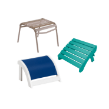





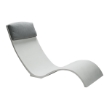







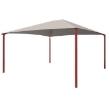
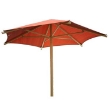
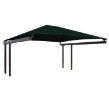

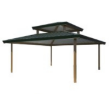
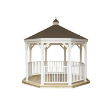
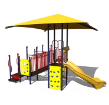












































Leave your comment